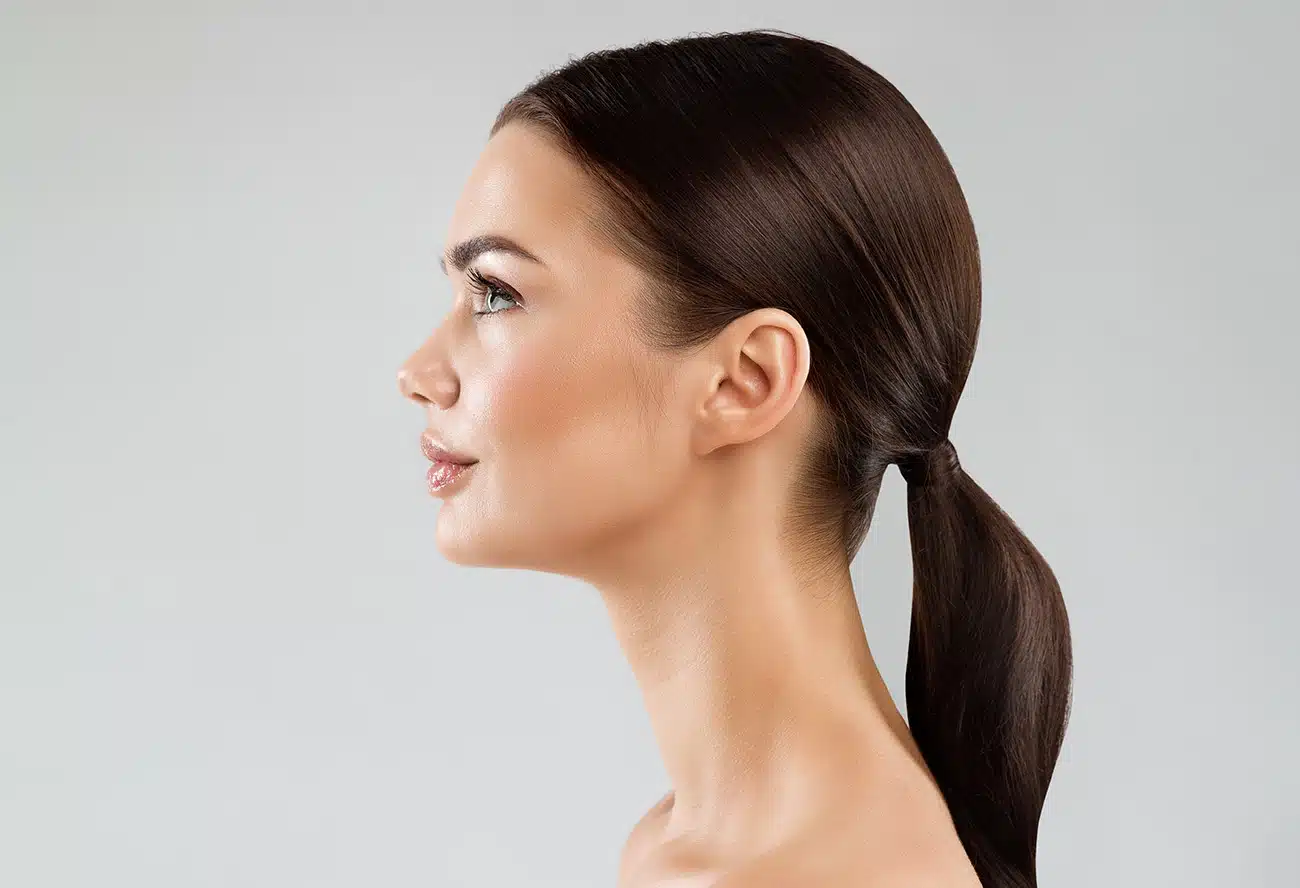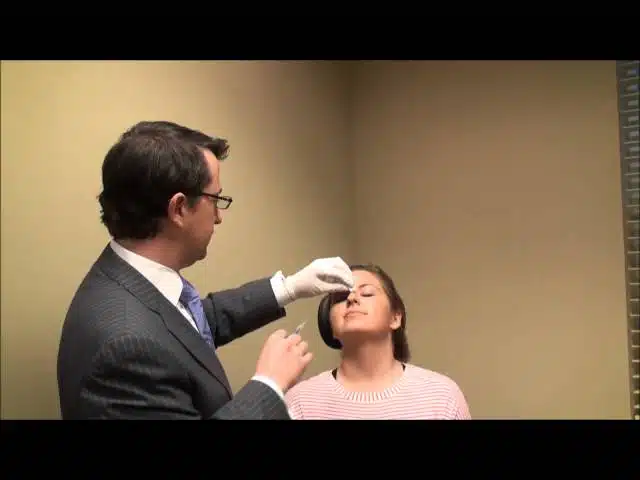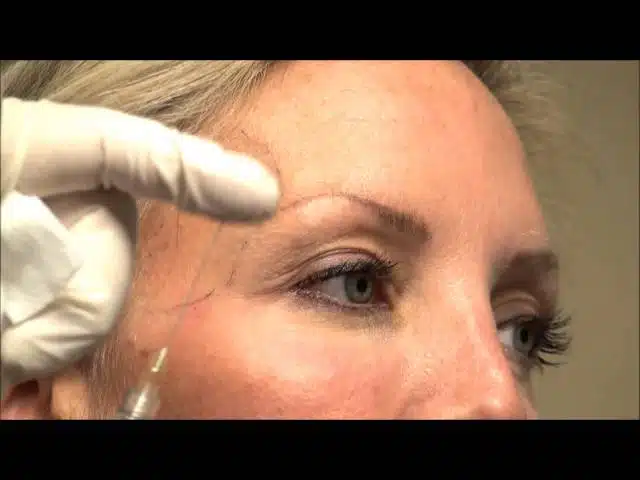
Home / Procedures / Dermal Fillers
Dissatisfied with aging skin? Discover the magic of dermal fillers—our expert providers’ exceptional solution in Cincinnati, OH. Erase wrinkles and rejuvenate your appearance, revealing a refreshed and youthful allure. Embrace the transformation!

Immediate Results
Experience instant rejuvenation as dermal fillers work their magic to plump and lift the skin.
Non-Surgical Solution
Skip the scalpel and opt for non-invasive dermal fillers, enjoying youthful results without surgery.
Versatile Applications
Dermal fillers can target various areas, including lips, cheeks, and nasolabial folds, for customized enhancement.
Restylane Silk, Restylane Lift, Restylane Refyne, Restylane Defyne, Juvederm Ultra Plus, Juvederm Vollure, Juvederm Volbella, Juvederm Voluma XC, and Belotero are safe, natural fillers used to restore volume and fullness to the skin. Our range of hyaluronic acid (HA) fillers is expertly designed to correct facial wrinkles and deep creases, offering rejuvenation from the mouth’s corners to the nose or chin, and effectively re-contouring areas below the eyes for a refreshed appearance.
Dermal fillers are a popular choice for those looking for a smooth, natural-looking result and facial contours. Among their advantages, these hyaluronic acid injections treat severe wrinkles and return lost facial volume.
In addition, versatile fillers can treat dark circles and under-eye areas. These injections help restore lost volume, reduce the appearance of wrinkles, and improve the look of dark circles. Restylane and Belotero are some of the most popular fillers used to treat this area.
A variety of dermal filler injections are available, each with specific benefits.
Restylane Silk, known for its precision and smooth consistency, is ideal for delicately addressing wrinkles and fine lines around the mouth. It helps recapture a rounder, fuller mouth that looks more youthful, fighting the effects of aging and thinning of the lips.
During your treatment, which typically takes under an hour, your healthcare professional will thoroughly clean the areas in preparation for the procedure. They may also administer special pain medication to numb the area. During the treatment, the healthcare professional will inject Restylane Silk gel into the area using a fine needle.
Usually, when you get Restylane Silk treatments, you may need either one or two sessions for the best results. However, this depends on the severity of each case. You can discuss this with your healthcare provider when you schedule your treatment.
Fortunately, you do not need recovery or downtime after receiving Restylane Silk. Although you may experience minor bruising and swelling in the treated area, you can return to your regular daily activities immediately after your procedure.
Restylane Lyft is used to treat facial wrinkles. This filler has been around since 2015 and uses hyaluronic acid for plumping up the skin and adding youth to an aging face. Overall, the product is used to:
Restylane Lyft generally targets the face and the backs of the hands to make them look younger by providing more volume. The skin appears plumper and fuller when the injectable is inserted into the skin of these areas.
During the Restylane Lyft session, your healthcare provider will first administer lidocaine to numb the target area or areas to be treated. Once the procedure begins, they use a fine needle to inject the dermal filler into the problem areas. You should not feel any pain at all.
In general, you should only need a single treatment when you receive Restylane Lyft. You will also see immediate results after your session. However, if you have particularly deep wrinkles or volume loss, you may need several sessions with multiple injections.
Restylane Lyft requires hardly any downtime and recovery, but it varies with each patient. You will likely experience minimal swelling and bruising one day to 36 hours after your procedure, but it should subside quickly. Usually, you can resume your normal activities on the same day of your treatment.
Dermal Fillers Before & Afters
*Each patient is unique and individual results may vary.
Restylane Refyne is an injectable filler made up of hyaluronic acid and XpresHAn technology. The dermal filler can correct the natural effects of aging that cause fine lines around the corners of your mouth, also known as smile lines. Over time, these lines deepen as your skin loses its youthful elasticity. Restylane Refyne excels in smoothing out smile lines, rejuvenating the lower facial area to reflect a more youthful and relaxed appearance.
Our expert application of Restylane Refyne is designed to enhance the lower face’s aesthetic, focusing on areas prone to aging-related lines and wrinkles, ensuring a harmonious and natural look while allowing you to maintain your natural expressions while smiling, puckering, or frowning.
Patients can expect to be at their Refyne sessions for around an hour or less. Before the injections, our anesthesiologist will administer medication to combat any potential pain or discomfort. They will then clean the area to be treated and administer the product through a fine needle.
Many patients only require one or two treatments when they get Restylane Refyne. However, this depends on the person and the depth of their smile lines. You may need a few more sessions to get your best results if your lines are particularly stubborn.
Since Restylane Refyne is a minimally invasive procedure, you do not need any recovery or downtime. Although you may have some redness, bruising, swelling, or tenderness in the treated area, these are temporary and should clear up within a week. You can resume your daily routine immediately after leaving our office.
Restylane Defyne targets deep nasolabial folds and marionette lines to pave the way for a younger appearance and firmer skin while allowing you to maintain your natural facial expressions.
Before a Defyne session, patients receive local anesthesia to numb the treatment area to minimize the chance of any pain or discomfort. Once the treatment itself begins, your provider will use ultra-fine needles to inject the dermal filler into the areas. The procedure itself is painless and fast.
The number of treatments required depends on the severity of each patient’s case. However, you can see results immediately following the Defyne session with collagen production taking place. Many patients won’t need a second session to see results.
Restylane Defyne treatment does not require any recovery or downtime. You can return to your regular daily routine and activities after you receive your treatment. You may experience some minor side effects like swelling, bruising, and soreness in the areas treated, but these are normal and subside quickly.
Juvederm Ultra Plus is a hyaluronic acid filler that is thicker in consistency than Juvederm Ultra. It corrects the cosmetic issue of deep wrinkles and fine lines in various areas of the face to result in a smooth, firm facial texture, making you look younger and fresher.
Juvederm Ultra Plus is a great alternative to getting a traditional facelift, often referred to as a liquid facelift.
When you undergo Juvederm Ultra Plus treatment, our expert providers clean the injection sites and then apply a topical anesthetic or ice to numb the area. Afterward, a fine needle containing the filler is carefully injected. The treatment itself lasts 15 to 40 minutes.
You will see results after one single session of Juvederm Ultra Plus. Those results generally last anywhere from 6 months to a full year, though we advise patients to schedule a few maintenance sessions during that time. Of course, each person is unique, so how long the treatment lasts and when you need to get additional treatment depends on the situation.
There is no recovery or downtime with Juvederm Ultra Plus. You may have some minor bruising or swelling in the treatment area, which is normal.
Juvederm Vollure is an injectable filler used to treat severe facial wrinkles. Vollure results can last up to 18 months, all from one single session.
During your Juvederm Vollure session, our doctors apply a topical cream to numb the area first. Then, they use a fine needle to inject Juvederm Vollure into the target areas, with a session lasting between 30 and 45 minutes.
After getting Juvederm Vollure, you should avoid extensive sun or heat exposure and strenuous exercise for the first 24 hours. You may have redness, swelling, or itching in the treated areas, and you can apply an ice pack. Your doctor will also advise you on when you can resume wearing makeup.
Juvederm Volbella is a dermal filler mainly used for lip enhancement, addressing lips that become thinner with age or as a result of smoking.
A healthcare professional injects Juvederm Volbella directly into the lips with a fine needle. Before the treatment, the doctor gives you lidocaine, a numbing agent, to prevent pain in the treated area.
You should see results from your treatment immediately after your session. You may need one additional treatment to get the best results, which last for a year.
Generally, there’s no downtime or recovery for the treatment, but you should refrain from strenuous activity and direct sunlight or heat exposure for the first 24 hours. You may have swelling and redness in the treated area, which is normal.
Juvederm Voluma XC is a hyaluronic acid dermal filler meant to correct the natural effects of aging in the face.
Juvederm Voluma XC targets the cheeks to restore a fuller, plumper face.
During your treatment with Juvederm Voluma XC, a healthcare professional will apply a numbing agent to the area. Afterward, the doctor uses a fine needle to inject it into the cheeks.
You may only need one treatment since the results of Juvederm Voluma XC last up to two years. However, results may vary depending on the person, which means additional sessions may be needed. You can discuss this with our professionals during your consultation.
After Juvederm Voluma XC treatment, you can resume your regular daily tasks and routine as there is no recovery or downtime.
Belotero is a dermal filler made of hyaluronic acid. This injectable offers many benefits, such as:
During Belotero treatment, your provider cleans the target areas, applies a numbing cream, and uses a fine needle to inject the filler. The procedure usually lasts around 20 minutes.
You may need two treatments per year with Belotero. Results last for around 6 months or longer with proper care.
While there is no recovery or downtime, you may experience soreness and redness in the treated areas. This is a normal Belotero side effect that clears up within a week.
I am very happy with my results. There is a big difference when looking back at pictures. I only wish I would have done it sooner. The staff is so nice and informative and made me feel comfortable. I appreciate the patience and understanding when I was nervous to have the fillers here.
Are FDA-approved treatments used to correct deep facial wrinkles and folds? Yes: the only FDA-approved treatment to correct facial wrinkles is Radiesse. Radiesse uniquely restores volume and promotes the growth of the body’s collagen without surgery, downtime, or the risks of permanent implants.
“Radiesse raises the bar for the treatment of nasolabial folds, delivering safe and effective enhancement that stimulates new tissue growth and collagen deposition. This clinical response rebuilds the skin’s foundation so that wrinkles or folds treated with Radiesse maintain aesthetic correction over the long term. Overall, Radiesse is a worthwhile investment that meets our patients’ demands and often exceeds their expectations with high satisfaction.”
FACIAL FILLERS ARE DIFFERENT THAN COLLAGEN…
Unlike collagen, Restylane Silk, Restylane Lift, Restylane Refyne, Restylane Defyne, Juvederm Ultra Plus, Juvederm Vollure, Juvederm Volbella, Juvederm Voluma XC, and Belotero are not derived from animals, so the risk of allergic reaction is nearly eliminated. Aside from their minimal risks, HAs last longer than other injectable fillers now on the market. Our expert providers’ patients commonly notice positive results for 6 months or longer—at least twice as long as collagen’s effects. A touch-up treatment will further enhance the natural-looking results obtained with HA fillers.
In addition to HA-based fillers, a few other cosmetic fillers are available for target zones of the face or duration. Each of these options offers its own set of benefits, and you can discuss them with us during your consultation to determine which one is best for you.

Rhinoplasty (non-surgical) is a quick and minimally invasive procedure that can reshape the nose without the need for surgery. During the treatment, the healthcare professional will use a dermal filler to fill in depressions or irregularities in the nose, resulting in an improved appearance. The professional will inject the filler with a fine needle directly into the area being treated.

For those looking to address wrinkles and lines in the temporal area, temporal fillers are an excellent solution. These facial fillers are specifically crafted for the unique needs of the face, which is characterized by thin skin that may be losing elasticity. With a temporal filler, your provider can help restore volume to give you a more youthful look.
Why Choose Donath Facial Plastic Surgery?
You may experience some minor side effects, such as redness, swelling, and bruising at the injection sites. These should resolve within a few days and can be managed with ice packs and over-the-counter medications if necessary.
The recovery time after dermal fillers will vary depending on the type of filler used and the area treated. Generally, most people can return to their normal activities immediately after treatment.
When performed by a qualified professional, injectable fillers are generally safe. However, like any medical procedure, they carry risks such as allergic reactions, infection, and uneven results.
The longevity of results varies depending on the type of filler used. Some last for six months, while others can last up to two years or more.
Some fillers, like those based on hyaluronic acid, can be dissolved with an enzyme called hyaluronidase. Others are semi-permanent and gradually diminish over time.
The cost varies based on the type of filler, the amount used, and the geographic location. It’s best to consult with a cosmetic dermatologist for specific pricing.
Determining if injectable fillers are suitable for you depends on your aesthetic goals, medical history, and consultation with a qualified professional.
If you live in the states of Ohio or Kentucky, Donath Facial Plastic Surgery offers Dermal Fillers among its services. For a full list of services, please visit our Locations page.
Are you sure we can’t help?
"*" indicates required fields